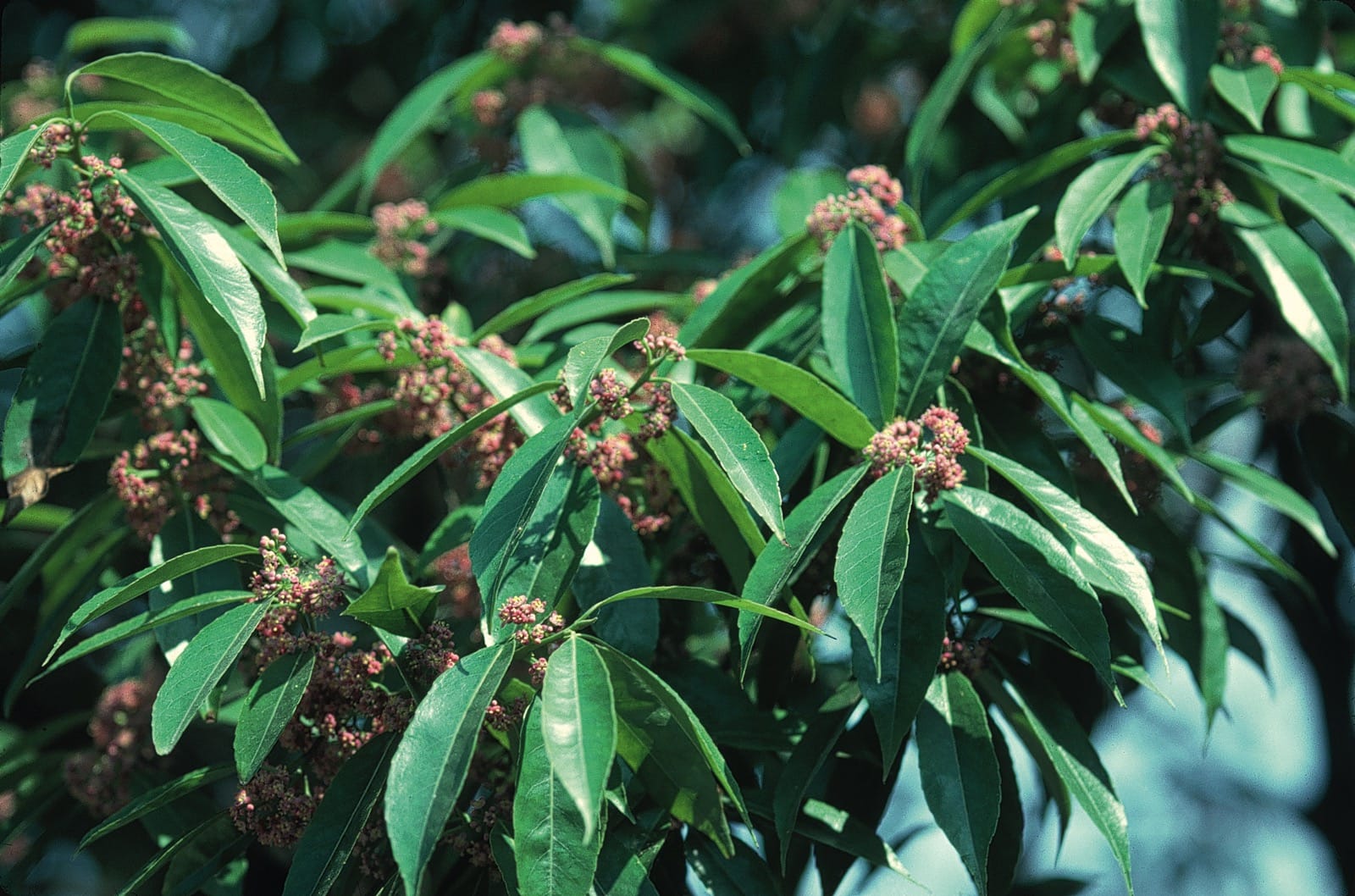Ilex purpurea
Credits
Article from New Trees by John Grimshaw & Ross Bayton
Recommended citation
'Ilex purpurea' from the website Trees and Shrubs Online (treesandshrubsonline.
Other taxa in genus
- Ilex × altaclarensis
- Ilex aquifolium
- Ilex bioritsensis
- Ilex buergeri
- Ilex cassine
- Ilex ciliospinosa
- Ilex corallina
- Ilex cornuta
- Ilex crenata
- Ilex cyrtura
- Ilex decidua
- Ilex dipyrena
- Ilex fargesii
- Ilex forrestii
- Ilex geniculata
- Ilex glabra
- Ilex hayatana
- Ilex hookeri
- Ilex integra
- Ilex intricata
- Ilex kingiana
- Ilex laevigata
- Ilex latifolia
- Ilex linii
- Ilex macrocarpa
- Ilex melanotricha
- Ilex mitis
- Ilex montana
- Ilex nothofagifolia
- Ilex opaca
- Ilex pedunculosa
- Ilex perado
- Ilex pernyi
- Ilex rotunda
- Ilex rubra
- Ilex rugosa
- Ilex serrata
- Ilex shennongjiaensis
- Ilex spinigera
- Ilex verticillata
- Ilex vomitoria
- Ilex yunnanensis
Large tree to 15 m. Bark smooth, pale grey. Branchlets glabrous, smooth and dark grey. Leaves evergreen, 5–11 × 2–4 cm, elliptic, lanceolate or oval, thin and leathery, upper surface glabrous, lower surface glabrous or somewhat scabrous, five to seven secondary veins on each side of the midrib, margins crenate or rarely serrate, apex acuminate; petiole 0.8–1 cm long. Inflorescences solitary, axillary cymes with 7–15 flowers. Flowers purple, pink or red, 4–5-merous and 0.5 cm diameter. Fruit fleshy, shiny red, ellipsoidal and 1–1.2 × 0.6–0.8 cm, with four to five pyrenes; prominent, persistent stigma on fruits. Flowering April to July, fruiting July to December (China). Galle 1997. Distribution CHINA: Anhui, Fujian, Guangdong, Guangxi, Henan, Hubei, Hunan, Jiangsu, Jiangxi, Yunnan, Zhejiang; JAPAN: Honshu, Kyushu, Shikoku; TAIWAN; VIETNAM (?). Habitat Evergreen broadleaved forests between 0 and 2000 m asl. USDA Hardiness Zone 8b. Conservation status Not evaluated. Illustration Hayashi et al. 1985, Galle 1997; NT403. Cross-reference K178 (as I. chinensis). Taxonomic note Ilex purpurea has been cultivated for many years as I. chinensis, but I. chinensis Sims is a mysterious taxon with white flowers and pubescent stems, illustrated in Curtis’s Botanical Magazine in 1819, of which no herbarium specimen can be traced (S. Andrews, pers. comm. 2007). Chinese botanists, and the Flora of China account, however, insist that I. chinensis Sims is the correct name for this species, and place I. purpurea in synonymy.
The date 1810 is claimed for the introduction of Ilex purpurea (Hu 1949a, Krüssmann 1985a, Galle 1997), but in view of the confusion with the mysterious I. chinensis this date should be regarded with suspicion. It seems most likely that it was introduced from Japan (where it is probably not native) in the mid-nineteenth century, and it has undoubtedly been reintroduced on numerous occasions since. In China the fruiting shoots are an important household decoration at Chinese New Year, their glossy green leaves and abundant scarlet berries providing the same cheering winter colour as do Western hollies at Christmas. As a horticultural subject, I. purpurea is a very attractive tree, forming a dense canopy above a pale trunk; its purplish flowers are a curiosity in the normally white-flowered genus. The young growth is said to be bright pink (Hillier & Coombes 2002). It is widely and increasingly cultivated in the southeastern United States, where it can reach at least 15 m, and clearly enjoys the summer heat and humidity there. It has been assumed to be somewhat tender, but as usual, provenance matters, and some stocks are hardier than others. Of numerous accessions at Arboretum Bokrijk, those from China are the hardiest and some are 3–4 m tall (J. Van Meulder, pers. comm. 2007). A male clone has been grown at the Washington Park Arboretum for about 60 years and makes a beautiful evergreen tree there (Zone 8) (R. Hitchin, pers. comm. 2007). Hogan (2008) reports that a clone from the US National Arboretum is fully hardy in Zone 7 conditions, but in general it will do best where temperatures do not fall much below –10ºC. In the United Kingdom it is slow-growing and is defoliated by hard winters (Hillier & Coombes 2002) but there are several good male specimens at the Hillier Gardens, the largest of which was 10.5 m tall in 2007, with two main stems. It has evidently appreciated the recent warm summers and mild winters, having grown from 7.8 m in 2001.

